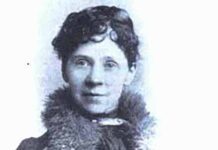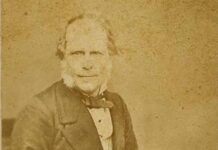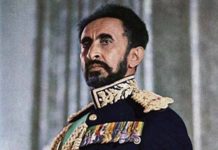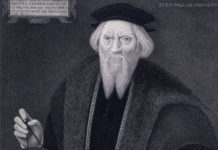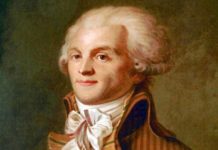Britain and the USA made joint plans for the war in 1942, with Europe as the primary theater of war. Meanwhile, in Asia, Japan scored vital successes.
The declarations promulgated by the United States, Nazi Germany and Fascist Italy in December 1941 radically altered the nature of World War Two, converting it into a world-wide conflict that prompted US President Franklin Roosevelt to ask for another meeting with Winston Churchill.
Europe, Primary Theater of War
The British Prime Minister arrived in Washington after a ten-day transatlantic voyage and was the President’s guest at the White House for the next three weeks.
Winston had long ago tired of defensive action in the war and longed to take the initiative with a landing in enemy-occupied territory. Now, with US forces taking part, he felt he had at last acquired the chance to mount an enterprise that was more in keeping with his combative temperament.
After Japan’s sneak attack on Pearl Harbor, the Americans could be expected to concentrate on a Pacific battlefield, where the Japanese had lost no time exploiting their ambitions. Yet, surprisingly enough, after some tough negotiations, the American Chiefs of Staff were persuaded that instead, Europe, with North Africa, should be the primary theater of war.
Winston’s Heart Attack
At this vital juncture, fate intervened. On December 26, Winston suffered a mild heart attack while struggling to open a window in his overheated room. The standard treatment was at least six weeks in bed, but Winston’s doctor, Charles Wilson, later Lord Moran, realized this was impossible. As one of the major war leaders, the Prime Minister could not be revealed to the world as an invalid with a bad heart.
This was why Dr. Wilson took a big risk. He kept his diagnosis to himself, and did not even tell Winston what it was. Instead, he told his patient that he was suffering from a sluggish circulation and recommended no undue exertion.
Although tired and weak, Winston managed to continue talks with the Americans. Fortunately, no one suspected anything was seriously wrong, even when the Prime Minister took a week’s break at a beach-side bungalow in Miami, Florida, before the conference ended on January 12, 1942.
Winston Heads Home
Winston began his return journey to Britain by flying to Bermuda, which was then a colony of the British Empire. From Bermuda, the Prime Minister was due to board a ship for his passage home. During the flight, Winston’s fascination with aircraft surfaced.
More than twenty years earlier, he had taken flying lessons at Croydon Airport, near London, and now, could not resist the chance to fly the plane for a short distance. He was at the controls for twenty minutes. He made two banking turns before handing the controls back to the pilot, who was impressed by his performance.
Japanese Attack on Singapore
Bad news, however, awaited Winston in Bermuda. Singapore, in the British colony of Malaya, was in imminent danger of falling to the Japanese.
On learning of this dire situation, Winston cancelled his sea voyage home and opted instead to return by flying boat, which could cover the 3,365 miles to Britain in less than eighteen hours.
The sudden change of plan nearly ended in disaster. Winston’s aircraft was off course as it approached Plymouth, Devon, on the southwest coast of England. Instead, it was veering towards the target zone of German anti-aircraft guns sited at Brest on the Atlantic coast of Brittany in northwest France.
it was initially identified by radar at Plymouth as a “hostile bomber”. Sector controllers issued orders for Royal Air Force fighters to intercept the intruder. Luckily, the mistake was discovered at the very last moment, when Winston was within minutes of being shot down..
Winston Orders No Surrender
The news from southeast Asia that had brought Winston hurrying home was truly grim. The British garrison at Singapore was on the brink of being overrun and surrender seemed imminent. Typically, Winston refused to countenance even the idea of capitulating to the Japanese.
“I want to make it absolutely clear,” he telegraphed to Field Marshal Sir Archibald Wavell, British Supreme commander in the Far East, on January 20, “that I expect every inch of ground to be defended, every scrap of material or defenses to be blown to pieces to prevent capture by the enemy and no question of surrender….until after protracted fighting among the ruins of Singapore City.”
Winston had already told his Chiefs of Staff that “commanders, staffs and principal officers are expected to perish at their posts.”
Surrender of Singapore
Soon after that, the news got even worse. Despite Winston’s instructions, General Arthur Percival, in command at Singapore, surrendered to the Japanese on February 15, 1942 and sixty-two thousand British, Australian and Indian soldiers were taken prisoner.
The loss of Singapore, the greatest mass surrender in British military history, hit Winston hard. He called it “the greatest disaster to British arms which our history records.” He had not yet fully recovered from his heart attack in Washington, but still put on a pugnacious, optimistic front to the outside world.
The strain on him was immense. As captain Richard Pim, head of Winston’s War Map Room, noted on February 18: “He said he was tired of it all; he is very seriously thinking of handing over his responsibilities to other shoulders.”
Winston’s Fighting Talk
But Winston’s black mood proved to be only a temporary lapse. On February 24, when he was pressured in Parliament to relinquish his second role as Minister of Defense, he was ready with a typically vigorous answer.
As he told the House of Commons “However tempting it may be to some when much trouble lies ahead, to step aside adroitly and put someone else up to take the blows, the heavy and repeated blows which are coming, I do not intend to adopt that cowardly course.”
Sources:
- Heinrichs, Waldo: Threshold of War: Franklin D. Roosevelt and American Entry into World War II (New York, NY: Oxford University Press USA ( ISBN-10: 0195061683/ISBN-13: 978-0195061680
- Barber, Noel: Sinister Twilight: The Fall of Singapore (Cassell Military Paperbacks) London, UK: Cassell, 2007) ISBN-10: 0304364371/ISBN-13: 978-0304364374



